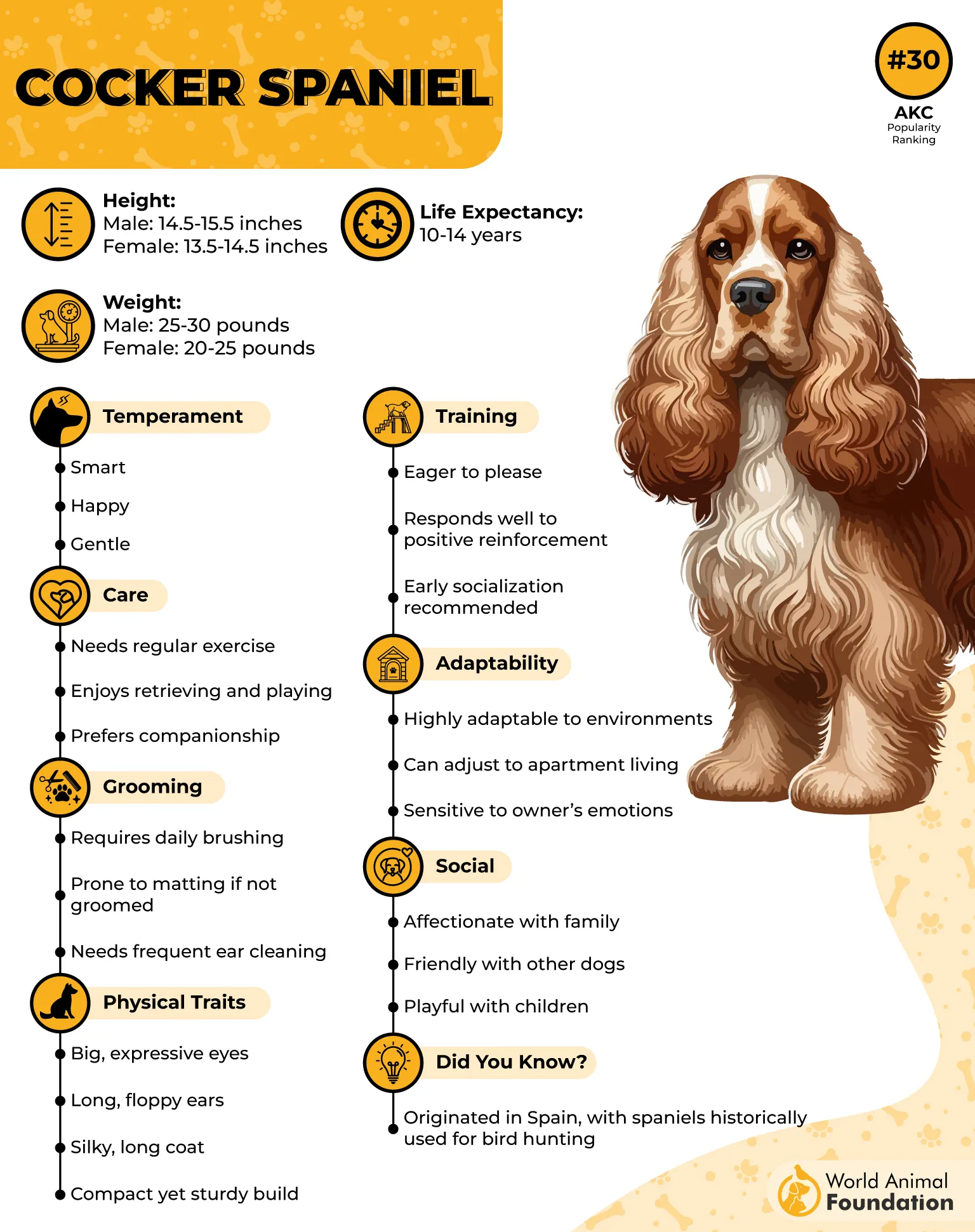Dogs are amazing. They are loyal, funny, and sometimes even smarter than we give them credit for. But no one likes to talk about this one thing: some dog breeds are walking bundles of love… and unfortunately, walking bundles of health problems too.
If you have got health issues of your own, or if you simply don’t want to deal with constant vet bills, there are definitely dog breeds to avoid if you have health concerns.
Some breeds are simply prone to health issues because of years of selective breeding practices that favored looks over long-term well-being. You will find some of the most unhealthy dog breeds right here… and while they might be adorable, they can also bring along a PLETHORA of potential problems.
So let us walk through it, one unhealthy breed at a time!
Dog Breeds To Avoid If You Have Health Concerns
1. English Bulldog

The English Bulldog is iconic. Wrinkly face, stocky body, short legs… they look like living cartoons, don’t they? But unfortunately, they are also one of the unhealthy dog breeds out there.
PetMD mentions these dogs struggle with serious breathing problems thanks to Brachycephalic airway syndrome. They have a short muzzle, which makes it absolutely hard for them to breathe, regulate temperature, and sometimes, even exercise without collapsing.
And don’t even get us started on Bulldogs in hot weather. They are also prone to skin allergies, cherry eye, and hip dysplasia.
Health Concerns of English Bulldogs:
Prone to breathing problems due to brachycephalic structure
Frequent cases of hip dysplasia and joint pain
Skin folds can trap bacteria and cause infections
Bulldogs demand careful dietary management to maintain a healthy weight
Note: these wrinkly dogs need daily facial cleaning, as per PDSA.
2. Cocker Spaniel

Sweet, gentle, and famous for those floppy ears. But let us not sugarcoat it, Cocker Spaniels are magnets for ear infections.
The American Kennel Club (AKC) noted that these gorgeous ears don’t get enough airflow, which means bacteria and yeast love to set up camp. Moisture gets trapped, and there it is. An ear infection.

The AKC also notes that Cocker Spaniels are one of the dog breeds prone to ear infections more than almost any other dog breed. Add in a tendency toward skin allergies, hip dysplasia, and sometimes autoimmune disorders, and you have a dog that needs regular vet visits to stay stable.
Health Concerns of the Cocker Spaniel
Floppy ears lead to frequent ear infections
At risk for autoimmune disorders such as IMHA
Prone to joint problems and eye issues
Need consistent grooming and monitoring
3. French Bulldog

One of the most popular dog breeds in the U.S. right now. Everyone loves the Frenchie’s clownish behavior and compact size. But here is a catch: these popular dogs also carry many of the same risks as English Bulldogs.
They are another one of the brachycephalic breeds with breathing difficulties. They have problems regulating heat and a higher risk of life-threatening conditions if they overheat.

PetPlace refers to this condition to their flat-faced physique. On top of that, Frenchies often suffer from cherry eye, skin allergies, and hip dysplasia at a young age.
Health Concerns of French Bulldogs:
Classic Brachycephalic Obstructive Airway Syndrome (BOAS) struggles
Higher risk of cherry eye and skin allergies
Can face spinal issues like intervertebral disc disease
Need preventive measures and attentive owners
4. Dachshund

The famous “Weiner dog” is beloved for its long body and short legs. But let’s call it what it is. A dog’s body shape is a recipe for back troubles. As mentioned by Purina, back problems are the most prevalent in these small dogs.

Dachshunds are extremely prone to intervertebral disc disease and occasional food allergies, and you will see why vets put them high on the list of dog breeds to avoid if you have health concerns.
Health Concerns of the Dachshund
Serious risk of back injuries from their long spine
Susceptible to periodontal disease without dental care
Need mental stimulation to avoid destructive behavior
Can face skin allergies and hair loss
5. Cavalier King Charles Spaniel
This is one of the largest toy breeds and a total royalty in looks and affection. But behind that cuteness hides one of the scariest health conditions in the dog world…. the Mitral Valve disease.
Mitral valve disease is a life-threatening heart disease where the heart cannot pump blood effectively. Most Cavaliers (90% as per the National Institute of Health) develop it by middle age, almost till 10 years.
Add in eye problems, and you have got a breed on your hands that suffers from more common health concerns than most dogs.
Health Concerns of the Cavalier King Charles Spaniel
Extremely prone to mitral valve disease. HIGH-RISK!!
Risk of eye diseases like progressive retinal atrophy
You need to take strict preventive measures if you have a Cavalier
Fragile compared to other breeds (look at that cuteness)
6. Great Dane
Now, let’s talk giant breeds. The Great Dane is majestic, huge, and often called the “gentle giant”. But being one of the large breeds comes at a cost.
Britannica mentions they are prone to having stomach and digestive problems. Small means throughout the day can help prevent more serious problems for this large dog.
Plus, they are also at risk of developing hip dysplasia, elbow dysplasia, and worst of all… bloat, a life-threatening situation where the stomach twists. They also struggle with heart disease and shortened life spans. They don’t live that long, only 7-9 years.
Health Concerns of the Great Dane
Large dogs are prone to joint problems
Higher risk of heart disease and digestive issues
Known for bloat in many dogs of this breed
Expensive to cover with pet insurance (hello, tall dog)
7. Pug
The clown of the dog world. Big, expressive eyes. Big wrinkly folds on the face. Pugs are adorable with those buggy eyes and quirky snorts. But… they are also in constant battle with their own bodies.
Like the Bulldog, Frenchies, and Pugs are not so different when it comes to breathing. All are brachycephalic breeds plagued with breathing problems. Many Pugs may also suffer from excess weight problems, itchy skin conditions (all those wrinkles), and even mast cell tumors, as noted by PetMD.
They may look like they are about to smile, but they most often have underlying health problems that you need to manage.
Health Concerns of Pug:
Breathing difficulties.
Prone to eye infections and dental diseases
At risk of Legg-Calve-Perthes disease, which ultimately leads to Arthritis
Need a balanced diet every day, and of course, careful monitoring by pet parents
Conclusion
So, what’s the takeaway? Some dogs are fighters by nature, but others are fighting against their own genes. Breathing issues, bladder stones, liver disease, collie eye anomaly, joint problems, heart disease, and whatnot?
If you CANNOT commit to constant vet care and heavy medical bills or invest in veterinary medicine for your dog, these are definitely the dog breeds to avoid if you have health concerns.
Never forget, dogs require good dog food, exercise, and regular vet visits. A balanced diet, healthy lif,e and healthy weight, and lots of love can go a long way. But genetics matter. Some dogs are just more prone to trouble than others.
Pick the right breed wisely. Invest in preventive measures to keep your dogs healthy. And if needed, explore pet insurance to prepare for the unexpected. Your dog’s health and your peace of mind depend on it.


